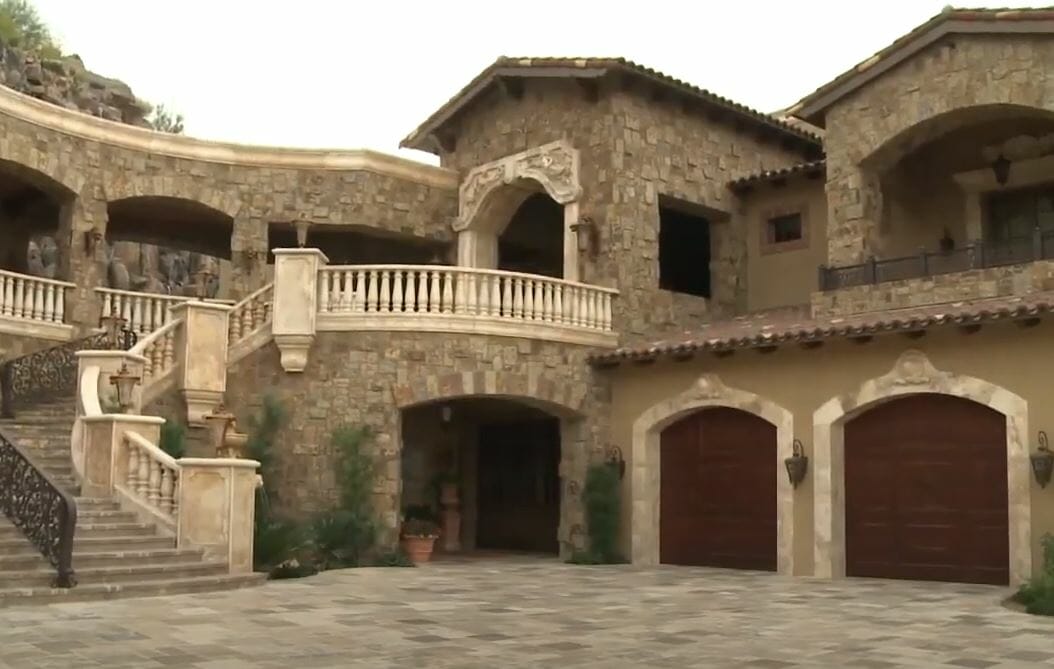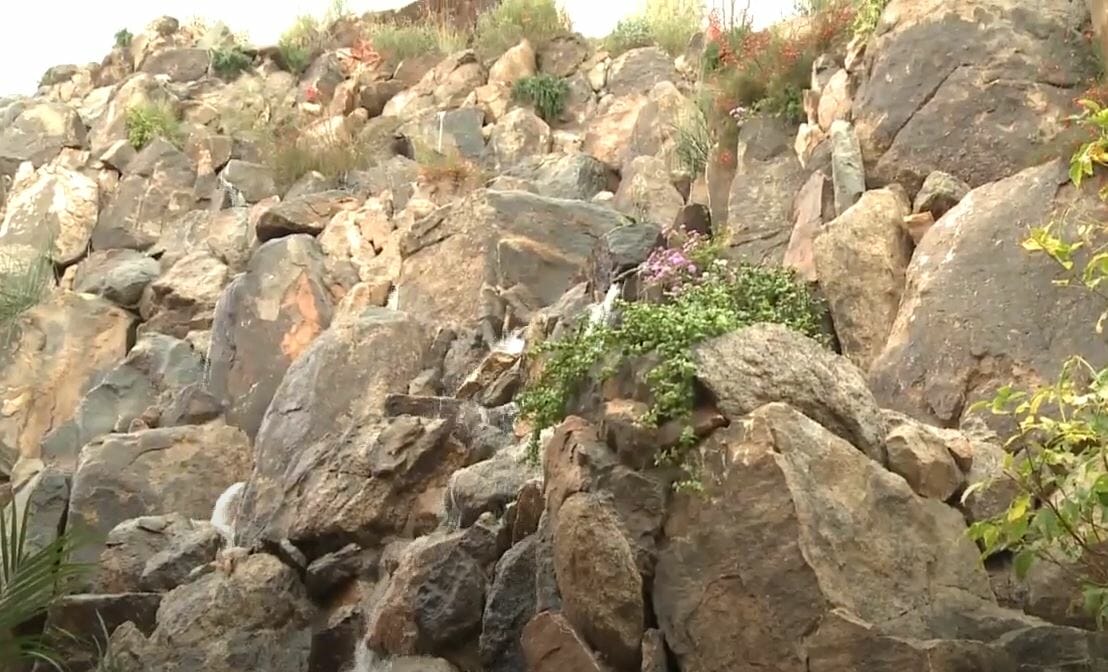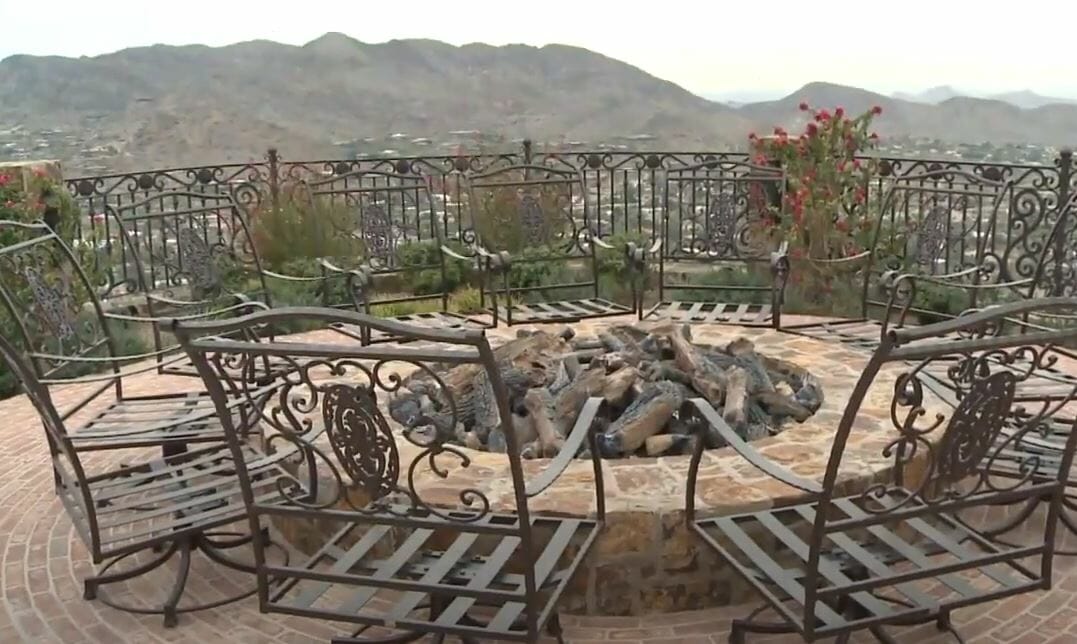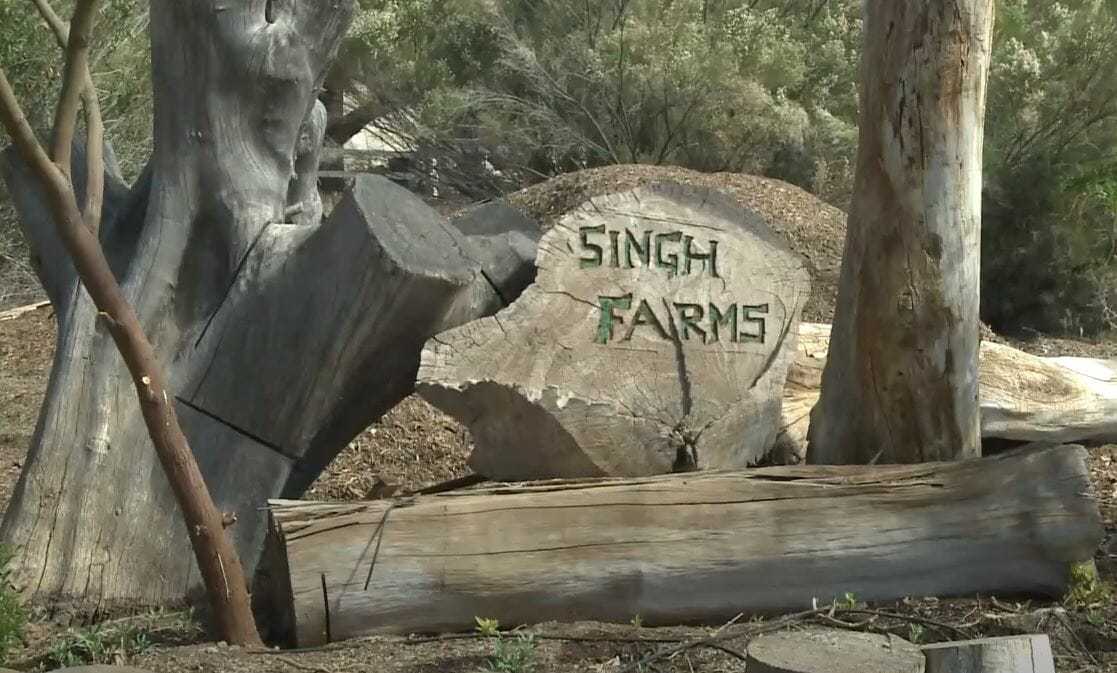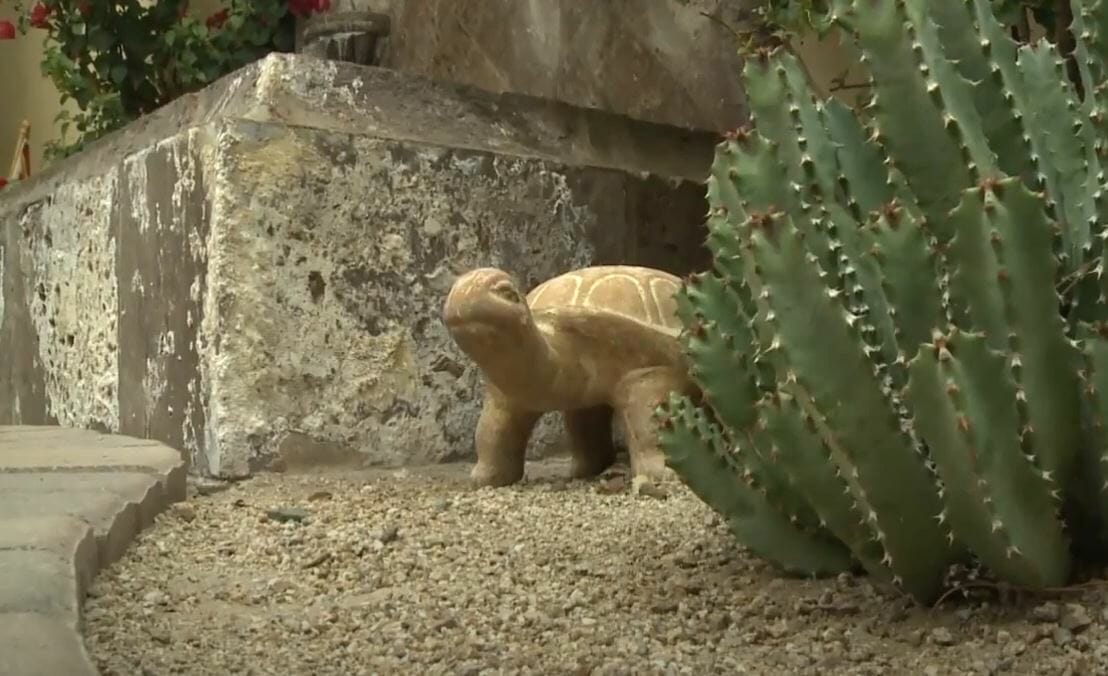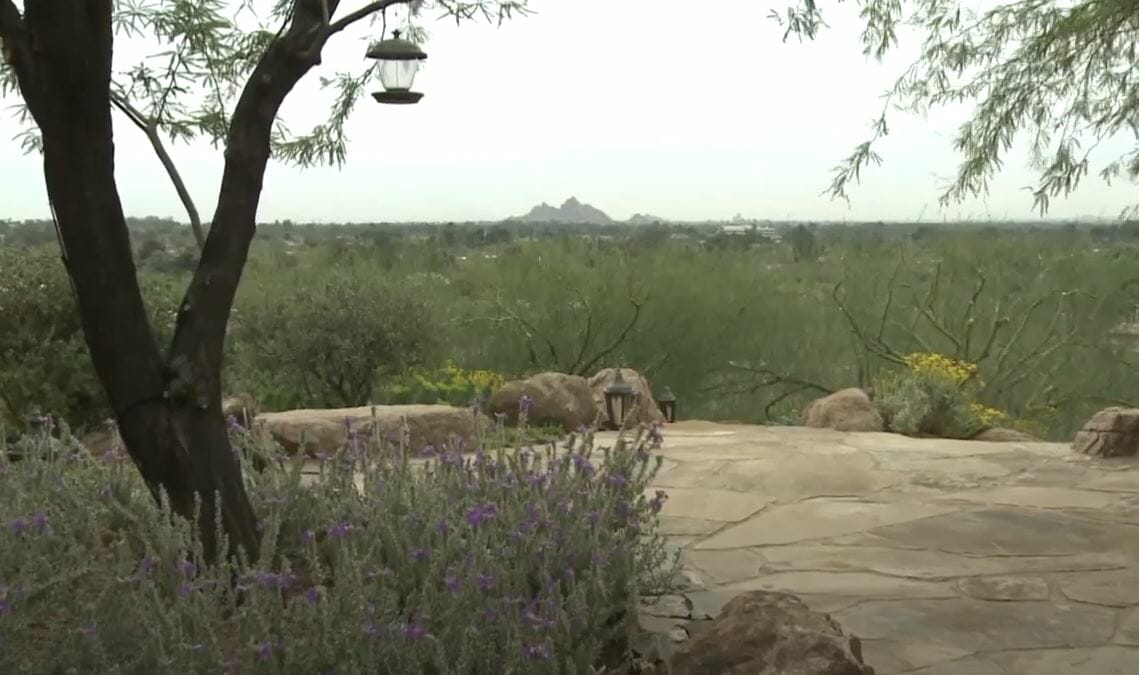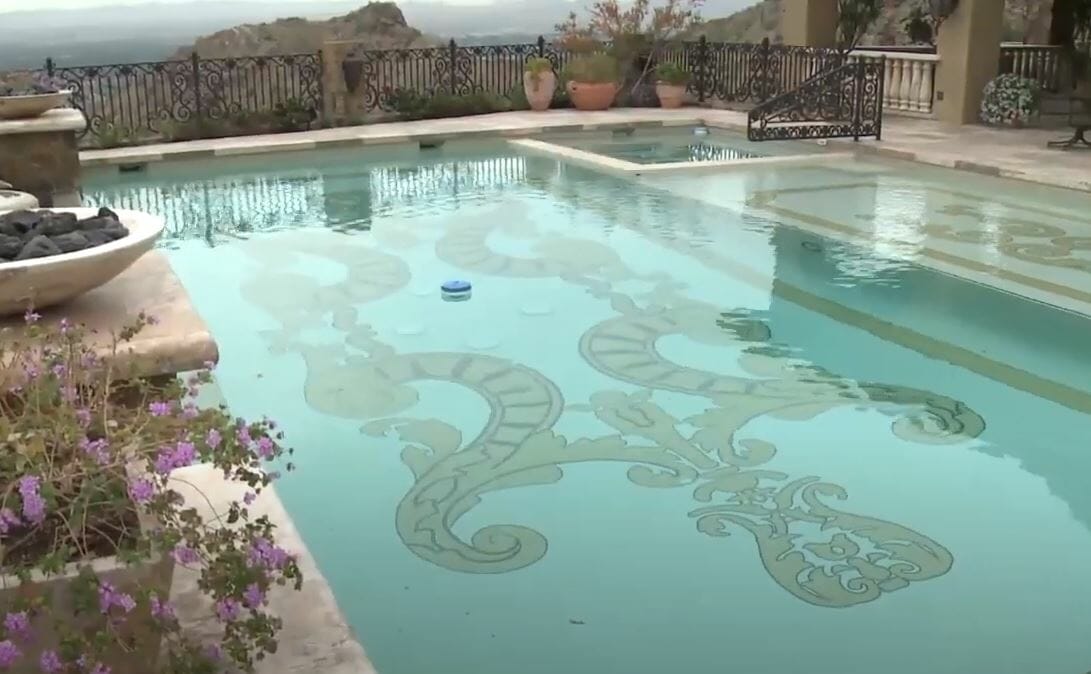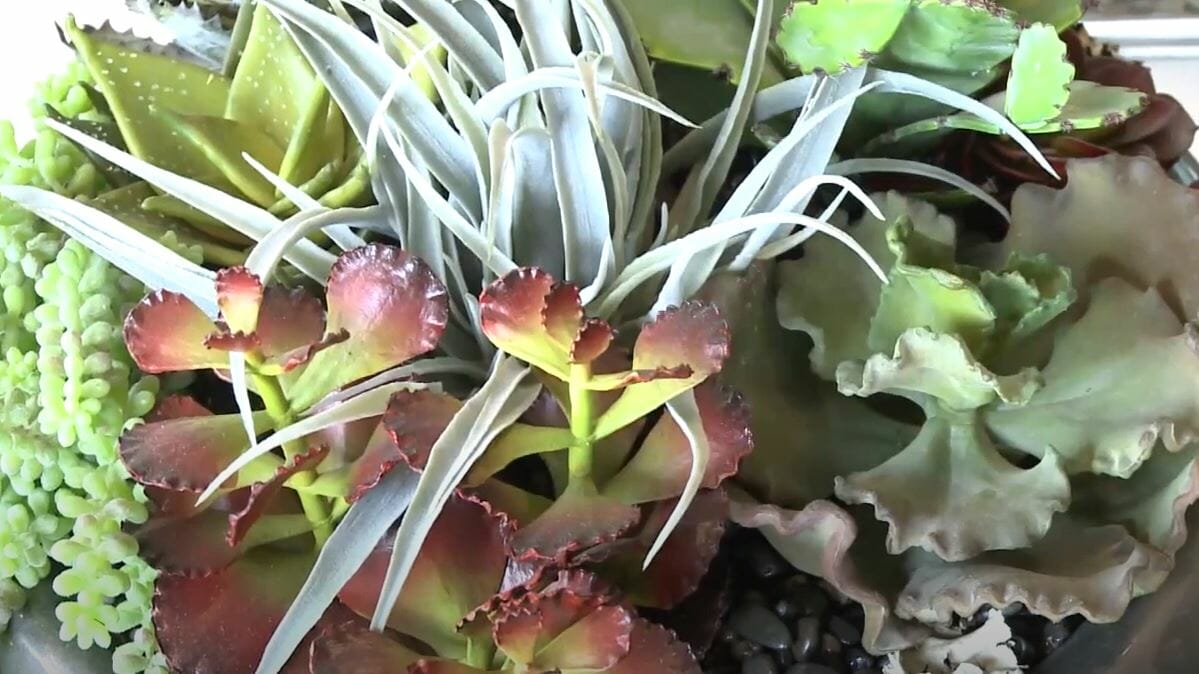Arizona is home to some of the most stunningly beautiful landscapes ever created. From meditation gardens to patios for entertaining, these unique designs have been recognized with top awards from the Arizona Landscape Contractors Association.
Landscape Architect Pete Cure takes us on a tour of these gorgeous places and to meet the architects behind the designs. Sit back, relax and enjoy luxurious views of the Grand Canyon State. Watch the video above, or if you’re more of a reader, we’ve provided the full interview transcript below (lightly edited for clarity).
- Enchanted Garden Landscape
- Singh Farms
- Sustain Scape
- Plant Solutions
- Duo Design Group
- More from Enchanted Garden Landscape
Pete Cure, Landscape Architect (00:14) – Today, we’re going to show you some of the best landscape people in their field and their projects. First up, they’ve won top honors from the Arizona Landscape Contractors Association, and their designs are beautiful. We’ll show you the ALCA winning yards.
Then, you may not think of soil compost being an art, but one guy in Phoenix has created a blend that people clamor to get for their plants. Plus, meet the Plant Guru. He takes ordinary plants to create extraordinary works of art.
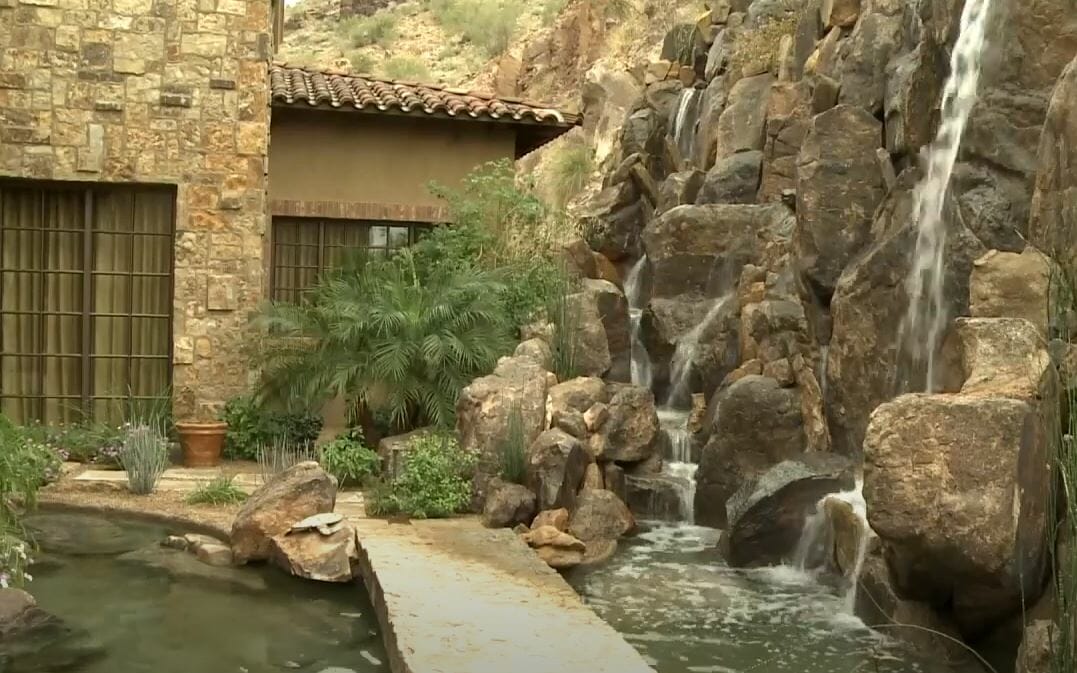
Enchanted Garden Landscape
PC (00:49) – We’re here pretty high up on the mountain somewhere in Paradise Valley, at these magnificent gardens and home that was built by Enchanted Garden Landscape. And with us is Donna Winters. I understand that you won the highest award given by ALCA, the Presidential Award for this project.
Donna Winters, President of Enchanted Garden Landscape (01:08) – We’re very proud of that as an organization. It demonstrates what we believe it to be significant about the work that we do and to the standards that we hold for the work that we do. We’ve created an experience that leads from the driveway…
PC (01:29) – Down at the street. Yeah, I noticed there’s no big scar for the road coming up here.
DW (01:34) – Exactly. That really speaks to the character of the home. And then we organize a sequence of layers ’til we get up here into the auto court.
PC (01:39) – Which doesn’t look like a parking lot, but it’s a great people place, like a plaza almost.
DW (01:43) – Exactly. We wanted a human scale to it. We tried to do large groupings of plant materials to have great impact on the space because of the size of the house. Scale’s important, so we want to really be impactful in the layering and creating the spaces.
PC (02:01) – Well, you know, there’s so many things I see here. But I hear this water feature. And I see a glimpse. You’re almost teasing me. We’ve got to go up there and take a look.
DW (02:08) – Can’t wait to show you.
PC (02:19) Donna, one of the things I love is, of course, the sound of this water. And the closer you get to it, the louder it is. But it really echoes nicely throughout all these breezeways and part of the house.
DW (02:29) – You bet. And it kind of changes the microclimate in these spaces.
PC (02:33) – You know, you don’t hardly get a sense of how massive it is, until you’re standing right up next to it.
DW (02:38) – Absolutely. The scale of this thing’s 42 foot tall, 70 foot long with pockets interspersed for plant material throughout. And it’s a whole infrastructure that was required to put this all together and make sure we could sustain it.
PC (02:53) – But I’ll bet you have thousands of tons of boulders.
DW (02:56) – Oh yeah, absolutely. And great care was taken to be sure that they were an authentic match to the materials that were naturally on site. In order to create an integration of the home and the landscape, color, texture, all of that matters. So we really take pride in making sure that they do integrate in that fashion.
PC (03:16) Well, that’s a massive project and engineering feet. But I understand you have a really intimate little chef’s garden over here.
DW (03:22) Oh yeah, I can’t wait to show you.
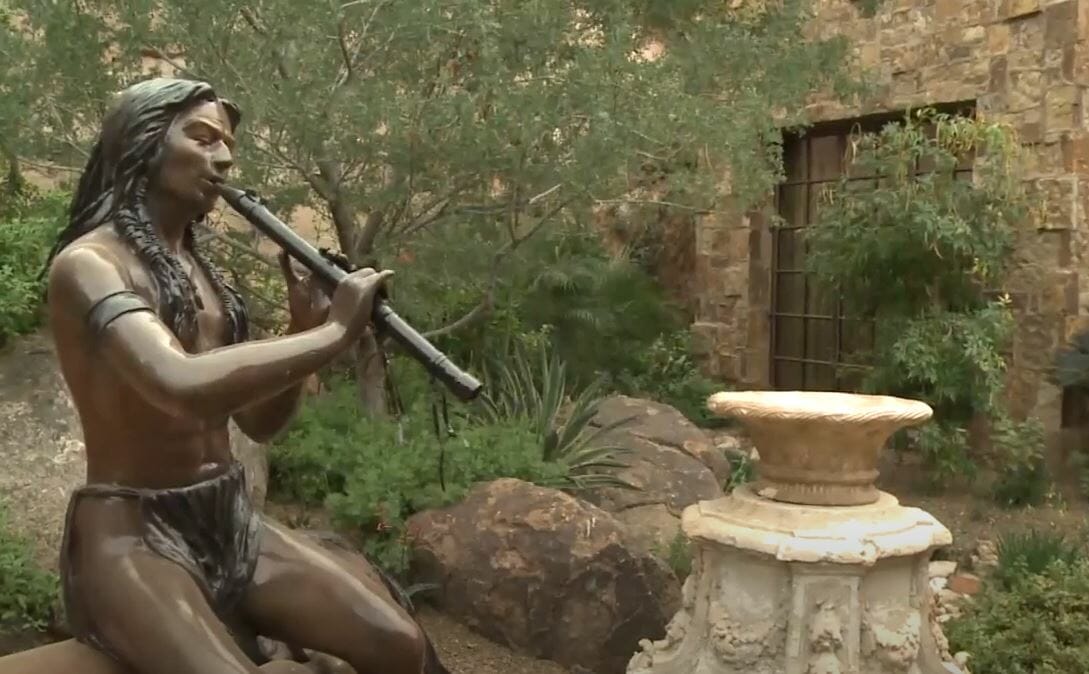
PC (03:35) – Donna, you know, I really love this space. It’s so quiet and tight and intimate with the background, the breeze coming through. Can’t hardly hear the water, but I can’t hear the city either. It’s just a really nice intimate space.
DW (03:48) – It’s a real sanctuary back here. It was one of the spaces I was looking forward to a lot because of the intimacy of the scale. The ability to rest on the boulders, to be in a lush setting. This is the chef’s garden when we have herbs tucked into nooks and crannies so that they can actually use those on a day-to-day basis when they’re here.
PC (04:11) – Well, it’s a great place just to come and sit here and meditate or read a book and just kind of get away from it all.
DW (04:17) – Delightful, isn’t it?
PC (04:18) – Yeah. Now I understand you have a space that’s almost the exact opposite of this, which is by the pool with a firepit and just this huge expansive view.
DW (04:24) – Oh, the grandeur of the space is amazing, and the view’s forever.
PC (04:34) – Donna, this space is exactly the opposite of the chef’s garden. We’re right out here exposed to the whole world but the view is phenomenal.
DW (04:39) – The view is outstanding, the relationship to the mountain. And the grandeur of this space required, again, a sense of scale with the plantings and also the furniture – the elements like the fire pit, all of those things were important. We tried to keep a lusher feel back here because of its being refined and elegant space. But we tried to interject some desert types of plantings also to add some additional color and performance in the rhythms and patterns that we created.
PC (05:08) – It looks like you can get 10-12 people around here easily.
DW (05:10) – Easily. That was the requirement and they’ve got 10 chairs.
PC (05:15) – Now, I understand there’s some other good patio and pool spaces, and we’ll take a look at those in a minute.
Singh Farms
PC (05:19) – But first, let’s get the dirt on a Valley man who’s creating some top-notch compost. There’s a hidden gem tucked away off the 101 and Thomas Rd in Scottsdale. It’s a 20-acre property known as Singh Farms.
Ken Singh, Owner of Singh Farms (05:32) – This is my idea to create healthy vegetables, healthy herbs, use nature’s system and no chemicals.
PC (05:39) – Their compost is sought after by many Arizona residents.
KS (05:43) – And if you balance the soil, it should have all the minerals, everything that our body needs in the soil so that when we uptake that vegetable, it gives us health and life.
PC (05:53) – Owner Ken Singh has researched what makes good organic compost. He says it’s his ability to let the compost age and absorb all the nutrients that makes it so rich.
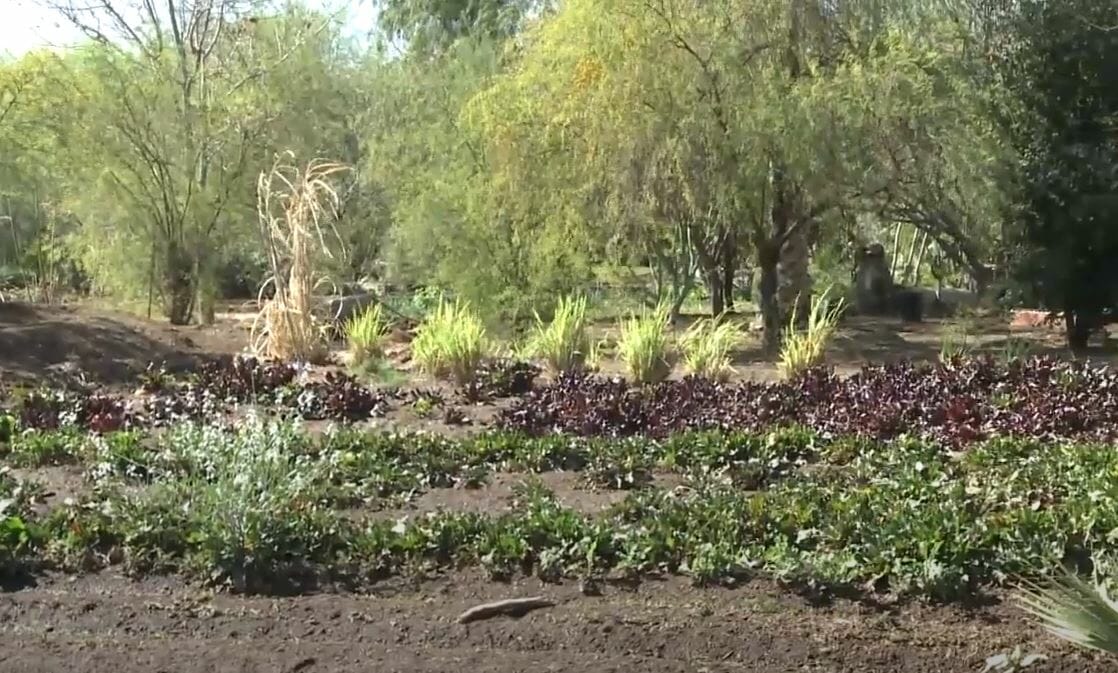
KS (06:04) – Compost is a combination of what’s called carbon and nitrogen. Carbon is brown. Nitrogen is green. So what I do is I add layers of diversity. For example, worm castings, chelated minerals, all these things I put in my soil to create the levels of diversity that will create the energy to create healthy, high soluble sugars. Eventually, they all bind together to create what’s called the soil food web. And in this soil food web is where energy transfers. As they die, they release energy to the plant. And what I’m trying to do is create that diversity of those microbes because it’s the microbes that give soil the integrity to give us growth.
KS (06:48) – Now in my particular farm, I cook twice. I cook it to 160 degrees to begin with to kill salmonella, E.coli. I run it through my grinders again. Because the first pieces are bigger, you need more oxygen to create the microbes. Then I regrind it. For the next cooking, I cook between 152 and 156 degrees because that’s where most microbes are created.
PC (07:11) – Singh hears from many of his customers about the difference his compost makes in their gardens.
KS (07:15) – But the first thing, folks, is have patience. First year, your garden will produce. Second year, you’ll be a genius, giving to your neighbors because the soil is building. It takes one to three years to change the dynamics of soil.
Sustain Scape
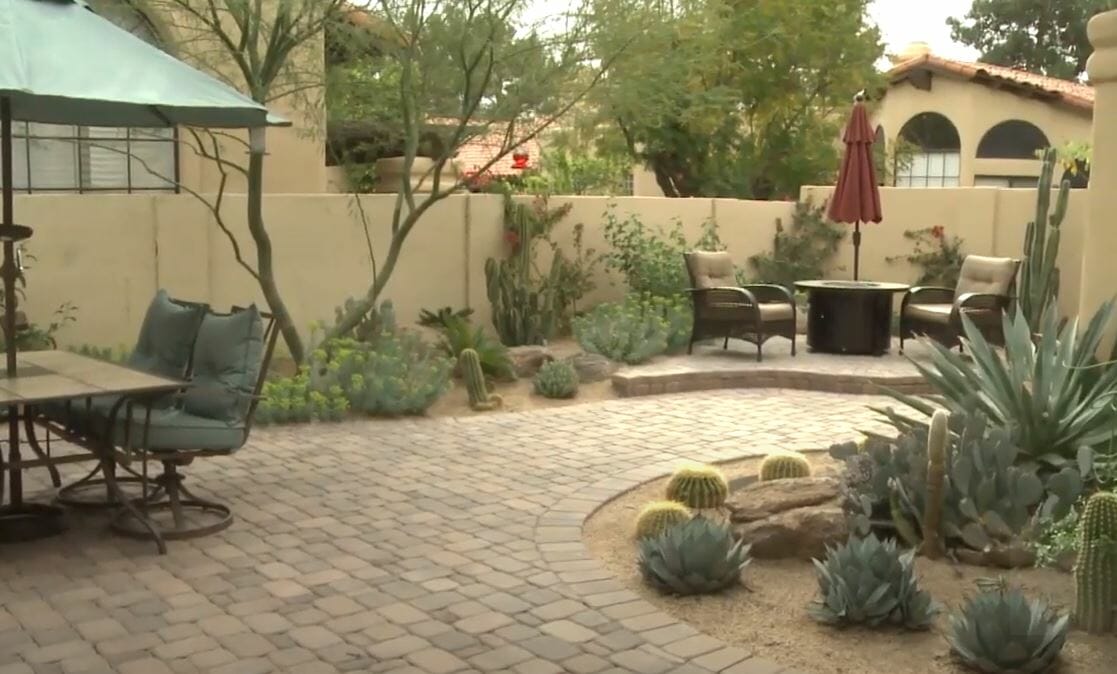
PC (08:34) – We’re here in North Phoenix with Mike Robison, the owner of Sustain Scape. And Mike, this beautiful backyard won an ALCA award, didn’t it?
Mike Robison, Owner of Sustain Scape (08:41) – Yes, correct.
PC (08:42) – And what category?
MP (08:43) – Award of Distinction, Residential for Under $25,000.
PC (08:47) – You’ve got a lot in this backyard for that little bit of money.
MP (08:49) – Crammed it in, yeah.
PC (08:51) – What was here before you started?
MP (08:53) – Just the typical grass, Arizona 80’s style landscape, Queen palms.
PC (09:03) – And what was it the owners wanted to achieve back here?
MP (09:07) – They wanted the desert basically. They’re part-time residents from Colorado. They didn’t want that. They wanted low water, low maintenance and desert landscape.
PC (09:17) – Now, I noticed that there’s a very narrow access to this backyard. That must have been real fun getting stuff in and out.
MP (09:24) – Yeah, a little tricky. A lot of wheelbarrows, a lot of hard labor, dollies… big boulders, no heavy equipment here.
PC (09:35) – So how’d you get the boulders back here?
MP (09:37) – Rolling them. We roll them on stakes. A couple on the wheel barrels, but the big ones you’ve got to roll with the stakes, kind of Egyptian style.
PC (09:44) – So low maintenance. Definitely the hardscape helps with that. And I love what you’ve done. The pavers, you install all of those, too. And you’ve kind of created at least three different little outdoor room areas. I see an area for dining, a nice little area with a fire pit. And then an area kind of for lounging, just off the covered patio here. Plus, you’ve got a great fountain for some great noise back there.
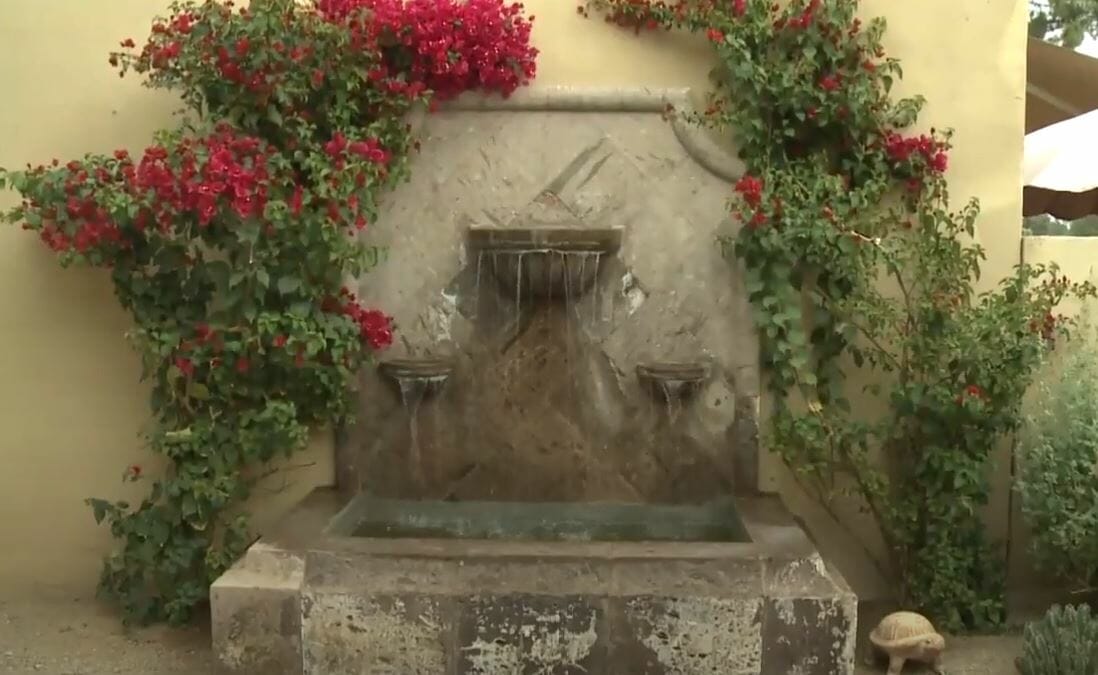
MP (10:08) Exactly. Yeah, it’s kind of separated out for different uses. It opens up their whole inside of their house to like an extra room outside.
PC (10:18) – So Mike, everything in this backyard looks pretty new except for that fountain. It looks kind of old. Where’d you get that?
MP (10:24) – We’ve used Cantera stone. It’s a soft natural stone out of Mexico. It can be carved, and it kind of gives a pretty aged look pretty quickly.
PC (10:33) – And then you just have a pump and a little float valve in there or something?
MP (10:39) – Right. A pump and an auto fill. And then when it’s on, the clients like to open their doors. And it echoes through the whole house. Kind of peaceful, tranquil.
PC (10:47) – Plus, it blocks out all the background noise of the city.
MP (10:49) – Exactly. Definitely.

PC (10:50) – And the maintenance is definitely low with both the decomposed granite and your palate of plants. Why don’t you just explain some of the plants that you’ve got here?
MP (11:00) – We’ve got some gopher plant, succulents. Euphorbias.
PC (11:04) – I love that plant. That actually works very well up in northern Arizona too. It doesn’t suffer from the cold climate.
MP (11:10) – Yeah, a very diverse plant. I’ve got some globe mallows. They’ve got some great seasonal colors – oranges and pinks, different colors. Of course, you’ve got to have the bougainvillea in Arizona. Year-round color.
PC (11:23) – Works to cover the walls really well. And then you’ve got a lot of different cacti in here, huh?
MP (10:27) – Sure. Correct. We’ve got some Argentine giants, some Moroccan mounds.
PC (11:33) – Twisted Cereus.
MP (11:35) – Mexican fence posts.
PC (11:37) – Golden barrels, some agaves.
MP (11:39) – Right. Kind of a mixture of stuff.
PC (11:42) – Well, those are great because they add a real kind of sculptural quality. You know, in the garden, they’re almost like living sculptures themselves. And they kind of change as they grow.
MP (11:51) – Exactly. And then you don’t have to trim them.
PC (11:54) – Well, you’ve really created a beautiful backyard and put a lot of punch into a tiny little space. I really appreciate you showing it to us today.
MP (12:03) – Thanks for having me.
Plant Solutions
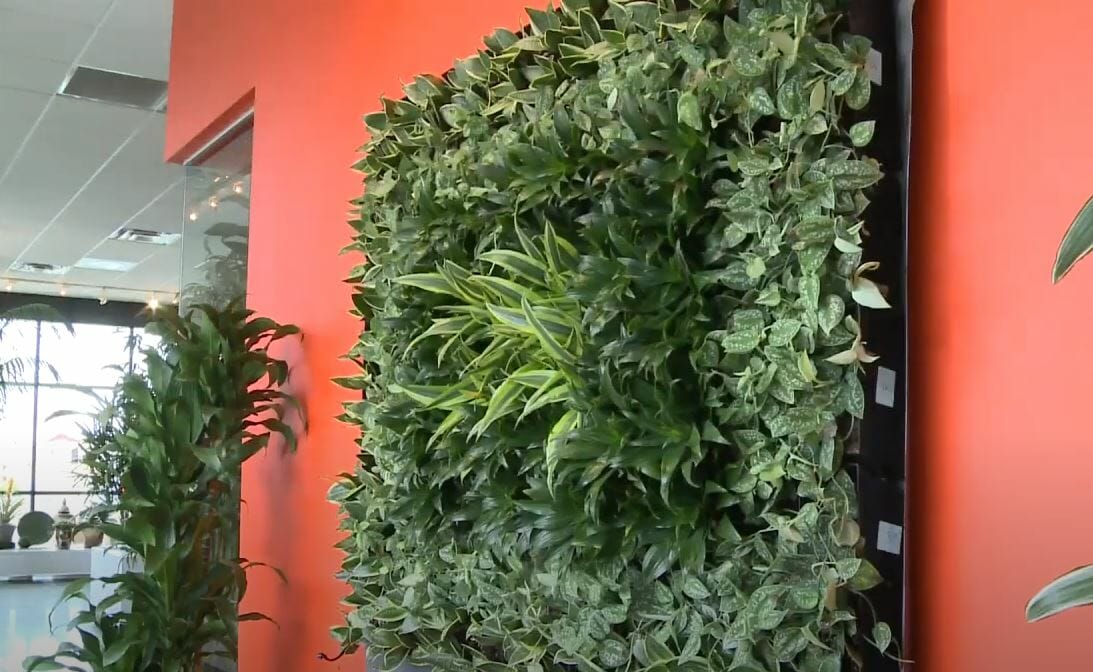
PC (12: 05) – Now let’s take a look at another great designer who’s known as the Plant Guru. When most of us look at plants, we think about putting them in pots or in the ground, but not Joe Zazzera. He thinks vertical.
Joe Zazzera, Owner of Plant Solutions (12: 13) Well, “living wall” basically is a vertical structure mounted to a wall or mounted to a substrate. And it differs from a trellis system in that the plants are all offset off the ground into some sort of substrate, whether that be organic or inorganic material. And the plants grow. Typically, when I design them, I design them in some sort of pattern so that they make some sort of sense.
PC ( 12:39) – Besides vertical green walls, this plant designer focuses on all types of designs, both commercial and residential with his company, Plant Solutions.
JZ (12:48) – Our primary business is that we design and install living plants indoors, and then we provide a maintenance program for our clients. About 80% of our clients are commercial clients. We’ll see office building lobbies and restaurants. Our secondary clients are our residential. And obviously, with our showroom here, we have a lot of residential clients that we bring in here and kind of show them some of the things that we do.
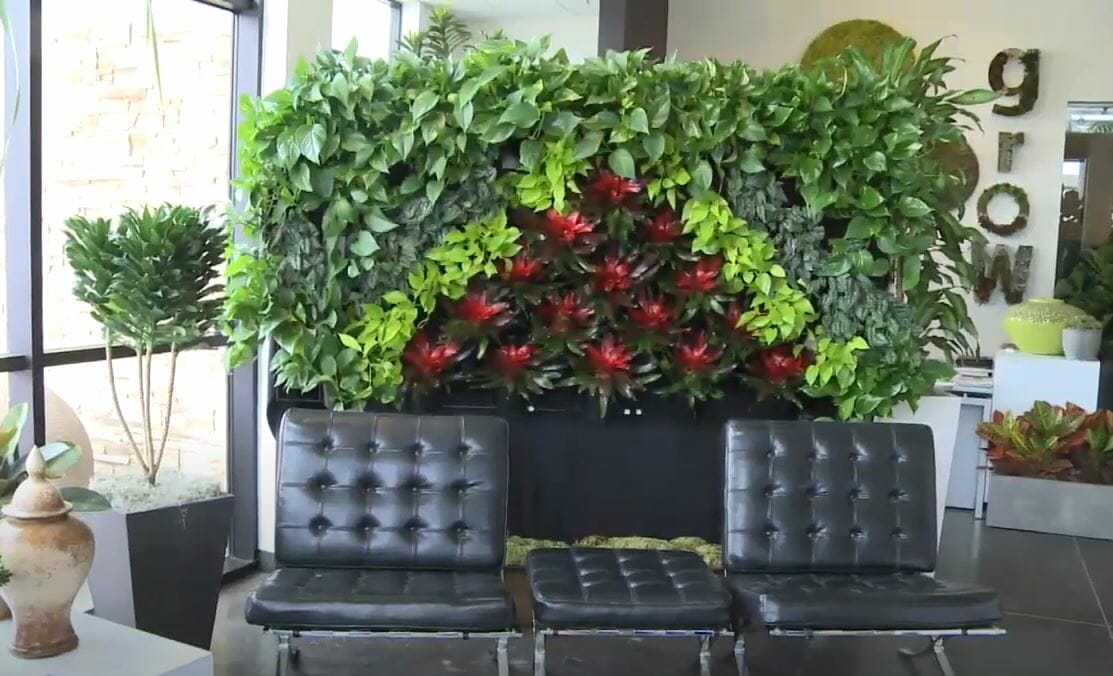
PC (13:09) – Zazzera is known as the Plant Guru because of his creative and outside-the-box thinking when it comes to using plants in design. And it has earned him a Master of the Southwest title.
JZ (13:20) – That was a total surprise, first of all. I mean, I had no idea. It’s just unbelievable. For me, it feels like… Well, why me? Because I’m just a guy from Phoenix. But it meant a lot to me.
PC (13:36) – Zazzera’s designs are a sight to behold and are more like art than plantings. This arrangement of golden barrel cacti are picture perfect when hung on the wall and framed. Something so simple, yet original.
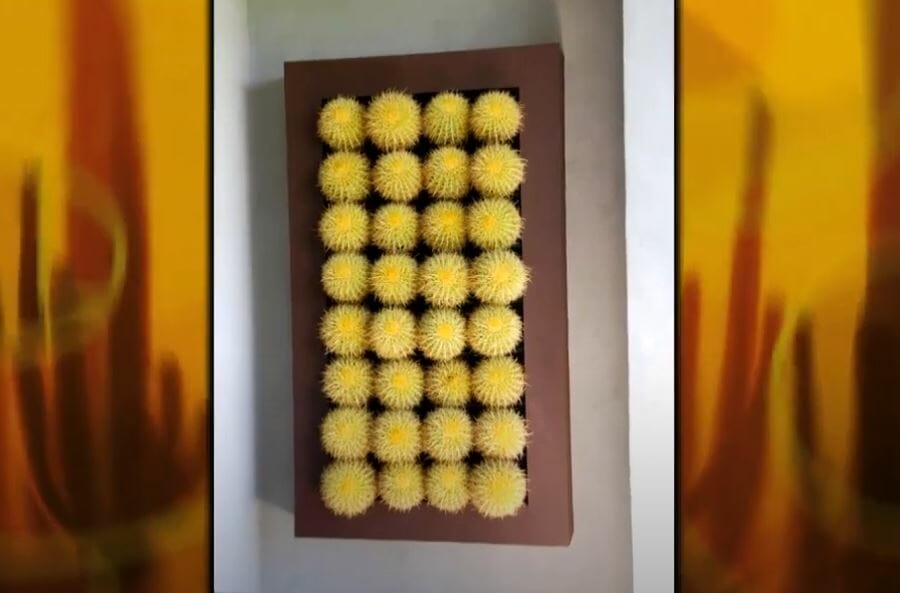
JZ (13:48) – I think the barrel cactus design stems from my idea or my need for having things logically and orderly placed. So there’s something about the barrel cactus in a repeating pattern. It’s simple, but yet it’s sophisticated. And I’ve done a bunch of them since then because people are very attracted to them.
PC (14:07) – It’s a passion for his work and attention to detail that makes all of his projects so breathtaking.
JZ (14:13) – I figured out a way in my life to sort of grab onto things that I’m interested in and really do something with it. I don’t always personally call it passion. But people, you know, have said that about me, that when I sort of am interested in something, that I just go with it. And I run with it. That translates to passion.
PC (14:32) – Although design is important, it’s the connection he creates with his clients in nature that makes him most proud.
JZ (14:38) – Well, one of my big passions in life is reconnecting people with nature. I mean, that’s probably the thing that motivates me and drives me the most. I’m just lucky that I’m in a business where I have the ability to do that.
Duo Design Group
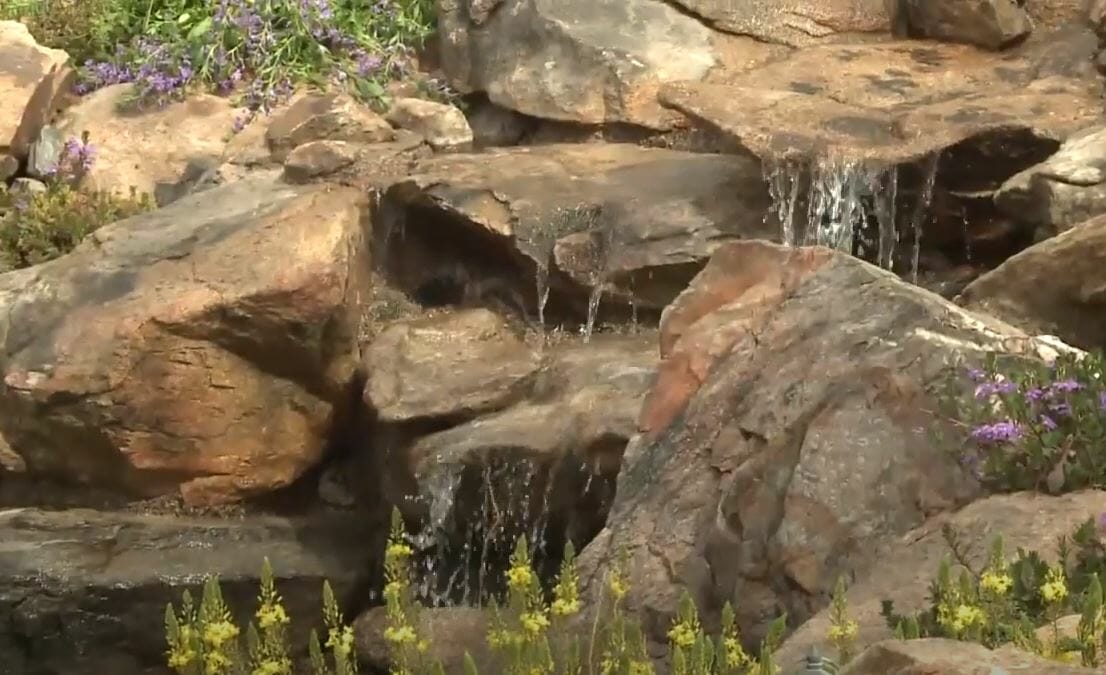
PC (16:20) – Duo Design Group has a reputation for creatively working with the natural environment. And with me today is their principal landscape architect, Tracy Adams. Welcome, Tracy.
Tracy Adams, Principal Landscape Architect at Duo Design Group (16:31) – Thank you, Pete. Thank you for having me.
PC (16:32) – So I understand you were charged with working with a relatively small space on this large property. Why don’t you set the scene for what was here and what you had to do?
TA (14:43) – Well, the client was put in a position where they had to do a pretty extensive remodel which entailed remodeling their bathroom. And they really had this beautiful view to Camelback Mountain which was the driving factor in developing this patio. But they wanted it to be a special place and a place where they could sit and have private lunch. But also enjoy… As you can see behind me this water feature that we developed in the back, that it would be something that would be very special and enjoyable for her while she’s at her vanity and taking long lounging tubs.
PC (17:20) – Kind of creates a really cool vignette to constantly be able to look at. But what was here before? You had a little retaining wall or something?
TA (17:26) – Yeah, the retaining wall that you see behind me, the stone continued. So the walkway between the house and the retaining wall was very narrow. So what we had to do was to peel back the grade to be able to install this beautiful boulder waterfall, and then continue to peel the braid back a little further to enlarge and allow us to have this nice sitting area for her to do private lunches with her girlfriends. This is really intended to be a private patio.
PC (17:55) – Now, what were the challenges? I mean, you don’t have a lot of access to get to here, do you?
TA (18:00) – No, we don’t. And that was definitely a big challenge. So we had to access it by the street. And coming up from that area, of course, caused some construction damage, which then we had to go back in and re-veg in a very artful, nice way to make it look really natural. And as you yourself saw, it was really even impossible to tell that that’s where they came from.
PC (18:22) – You had to create your own road to get up here with the equipment, especially with some of these large boulders. I understand a boulder back there was almost as big as a guy.
TA (18:29) – Yeah. They called it a small car. So we had to get a pretty large, nice backhoe in here. And then a very creative team that were able to do a combination of pushing and then lifting to get that into place.
PC (18:46) – The plantings you have there are really pretty. It has a real nice, natural feel. But you’ve got some challenges with the wildlife, don’t you?
TA (18:55) – Absolutely. And you know, we’ve got an issue with the javelina. We’ve got an issue with the rabbits. And right now, we’re still in the process of trying to figure out maybe something that would be less appealing to the rabbits. And it seems like for the moment that the javelina have decided to visit elsewhere on the property and are not bothering our private garden up here.
PC (19:15) – Well, I’ve got to tell you, Tracy, the end result here is just absolutely beautiful.
TA (19: 18) – Thank you so much. Thank you very much for having me.
More from Enchanted Garden Landscape
PC (20:27) – I’m still here with Donna Winters, reviewing this magnificent estate and gardens. And nothing this grandiose would be complete without the pool.
DW (20:35) – Absolutely. It’s a great family pool. They love to use it, and they love to swim laps. They have shallow shells where they can just hang out.
PC (20:43) – And I see you’ve got umbrella sleeves in there.
DW (20:46) – Exactly. Whether you just hang out in the shade or active play in the pool. And they like to do both.
PC (20:51) – And it’s all tile with some great patterns.
DW (20:53) – Absolutely. It’s just really distinctive as is the home.
PC (20:57) – You know, one thing I really love that you’ve done is all these pots and just kind of all over the place. And you’ve got really interesting plants in a lot of them.
DW (21:05) – You’ve got all the Italian clay, refined spaces… To speak to the architecture, all kinds of plants, layering of plants. And we’ve got every kind of garden. We’ve got sun gardens, shade gardens. We’re able to utilize cacti, house plants.
PC (21:26) – Well, you kind of have to because you’ve got your own climate here being on top of the mountain, right?
DW (21:31) – Absolutely. So the breeze makes a difference. And we tried to acknowledge that in the kind of choices that we placed in these pots.
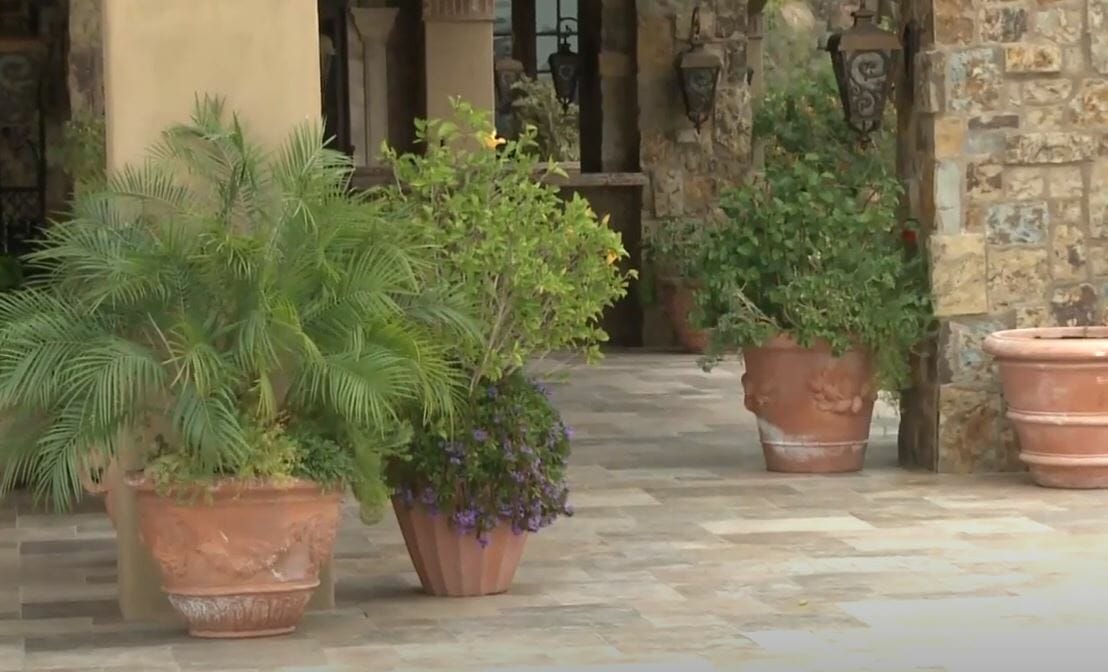
PC (21:39) – You know, Donna, the pots do a great job of just defining a lot of different outdoor spaces. But what’s the difference between the Italian impressive terracotta pots and the Mexican terracotta pots?
DW (21:49) – Well, there are a couple things that are different. One is the price. They are a more expensive pot. But there’s a reason for that. The longevity of the pot, the way it reacts to both heat and cold and temperature extremes… that’s the Italian ones. The Mexican – they fit that character of the other area of the yard. But they’re not going to last as long. The durability is much reduced. And we use the Italian to really create a presence. We have a beautiful variety of selections and styles. And within them, we’ve been able to create some compositions that really compliment.
PC (22:32) Well, you know, it’s really a fantastic project. I really appreciate you letting us come out and take a look at it with you today.
DW (22:39) Well, thank you very much. There’s a lot of wonderful people that made this happen and thought their actions mattered. And this is the result of that.
PC (22:47) The result is great.
PC (22:49) – Whether you have a high-end budget, or something smaller, you can have an award-winning landscape. When it comes to designing your own yard. Do what you like, create what makes you happy, and plant what you love. We hope you got some inspiration from our designers today.
Related: Pete Cure shares the landscape design he created for his own property.
For more ideas to spruce up your home, visit Arizona Living: Your Home, Your Inspiration.


